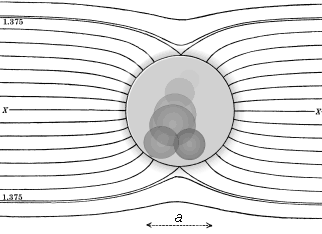

Note: Permission to reproduce this paper has been withheld by the publisher,
Springer-Verlag, Inc.
The Mach-Dvorak effect causes an illusion of depth because of apparent motion of intermittent flashes differentially timed in the two eyes. As in the Pulfrich effect, the Mach-Dvorak effect may be studied by presenting a moving target binocularly to a human observer.
Whereas the Pulfrich effect may be explained in terms of intensity dependent latency, the Mach-Dvorak effect depends on apparent motion of brief glimpses of the target; the latency is in the stimulus presentation, not in the visual system.
There is no visual latency involved in the Mach-Dvorak effect, and the physically discontinuous target presentation makes it infeasible to combine (superpose) the Pulfrich latency so as to modify the Mach-Dvorak apparent depth reported by the observer.
However, varying the level of illumination differentially in the two eyes does change the magnitude of the Mach-Dvorak effect: A sufficiently long exposure duration allows the visual system localize the dimmer stimulus systematically differently than the brighter one.
The Mach-Dvorak illusion may be used to control for observer depth-localization bias, to study visual persistence, and otherwise to deepen the understanding of the visual system originally brought forward by the Pulfrich effect.
Back to Pulfrich Effect Home. University Privacy Policy
The Pulfrich Effect, SIU-C. Last updated 2000-07-23